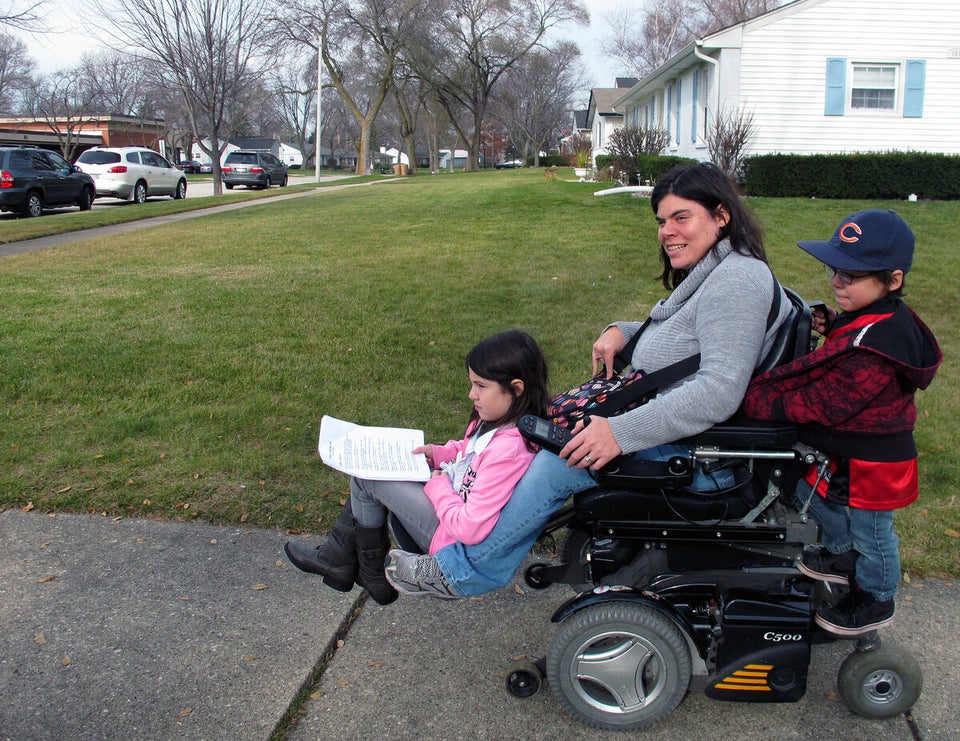I have been following the latest stories on "what not to wear as a Halloween costume" (and apparently there are quite a few dos and don'ts for dressing up, rules that this year's trick-or-treaters might need to brush up on before donning that Bargain Basement clearance costume and hitting the sidewalks). So, I guess it is only a matter of time before we will get the memo on what toys one should avoid buying in the Sears Christmas Wish Book. With that in mind, I have already started the wheels turning: This year, we will not be asking Santa for anything that he would have to take out a second mortgage for so as to pay for the supplies.
Which is not to say that, in all seriousness, I have not put in more than a little thought on the topic of the ethics of buying certain toys for gifts.
And all this because of the one and only item that is red-inked- and circled for emphasis, in our already ratty-looking Sears Christmas Wish Book 2013: that is, the Newberry Girls Fashion Doll Heal and Care Set, complete with foldable wheelchair, crutches, bandages, arm and leg cast (doll sold separately).
It's truly all the Girl is asking for.
Each day at mealtime, Daughter gets out the treasured book of childhood dreams and opens it up to page 682. And she dreams wistfully -- longingly -- of one day being the proud caretaker and friend of the Newberry Allie doll, a life-like toy with beautiful blonde hair who also incidentally has a few very special needs. As in, she needs wheels -- or a wheelchair, specifically.
And there is no doubt in my mind that my daughter's desire for this toy is driven by the close relationship she shares with her own dear real-life friend who also happens to have wheels, Jessica (not her real name). Daughter and Jessica have been fast friends since Kindergarten (I say that like it's been forever, but it has really only been a little over a year). And this friendship is forged on a mutual trust and empathy.
When Daughter first picked out the Allie doll/Heal and care set, I felt a little conflicted: Should I be buying her a doll that objectifies a child with special needs? Is this a respectful toy? But as I never had first dibs on the catalogue and had to wait my turn -- fifth in line after the other four had their fill of the "book of dreams" -- I didn't get to peruse before the others the fine samplings of this year's treasure trove. I didn't see the toy first -- she did. It was her pick.
And I don't know about you, but I like to trust children's instincts on things. Kids often have purer, clearer motives for doing things than we do as adults. Their choices are not laden with ulterior motives or burdened with over-thinking. Kids are not trying to impress anyone. Kids just know what they like, and that's what they want. End of story. So, when my daughter picked Allie who happened to also need a wheelchair and crutches, I guess it was because she just happens to really like someone who looks like that doll in real life.
No big deal.
And while the jury is still out on whether or not it's okay to make dolls of any kind that might appear to be emphasizing any defining quality of a person -- disability or otherwise -- over any another deserving quality (and believe me, I know this type of toy can go wrong for a multitude of reasons), I still think the fact that kids are making decisions less on what is politically correct and more on what they like (on what they LOVE) is what should be the final word.
And if kids want toys that represent the diverse and beautiful circle of friends from which they grow and blossom, more power to them. Maybe we as adults could learn a thing or two about empathy and true love just by watching children make these choices about what they truly care about. About what they know really matters: PEOPLE. And maybe we could learn from the kids that "it's not what people look like on the outside that truly matters but what they look like on the inside that makes the difference." That's the deal-breaker. You learn that lesson, you've learned them all. But of course, kids already know this.
They already know that it's what's inside that really counts.
Maybe we adults could stand a few brush-ups on this life-lesson instead of focusing so much on the politics of everything kids do or don't do (e.g., everything they decide they want to wear for Halloween or what they want for Christmas). Because 9 times out of ten, the decisions kids make about what they like are probably pretty A-okay.
And in my books, 9 out of 10 ain't bad.
ALSO ON HUFFPOST:
